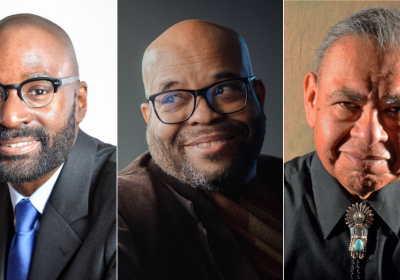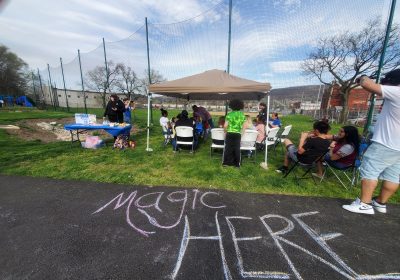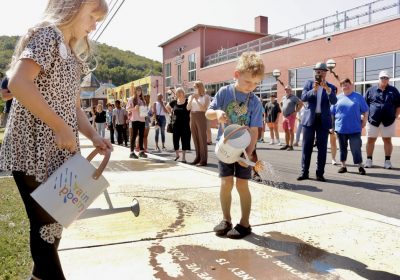We love libraries.
Through Teen Reading Lounge (TRL), our award-winning reading and civic engagement club for youth, and through partnerships with state and local library organizations, the staff here at PHC have seen firsthand how vital libraries are to communities across Pennsylvania.
Every year we are fortunate enough to visit libraries in all corners of the state. We meet their staff and patrons, talk to their young people, and witness how their programming is transforming lives and making positive change in the broader community.
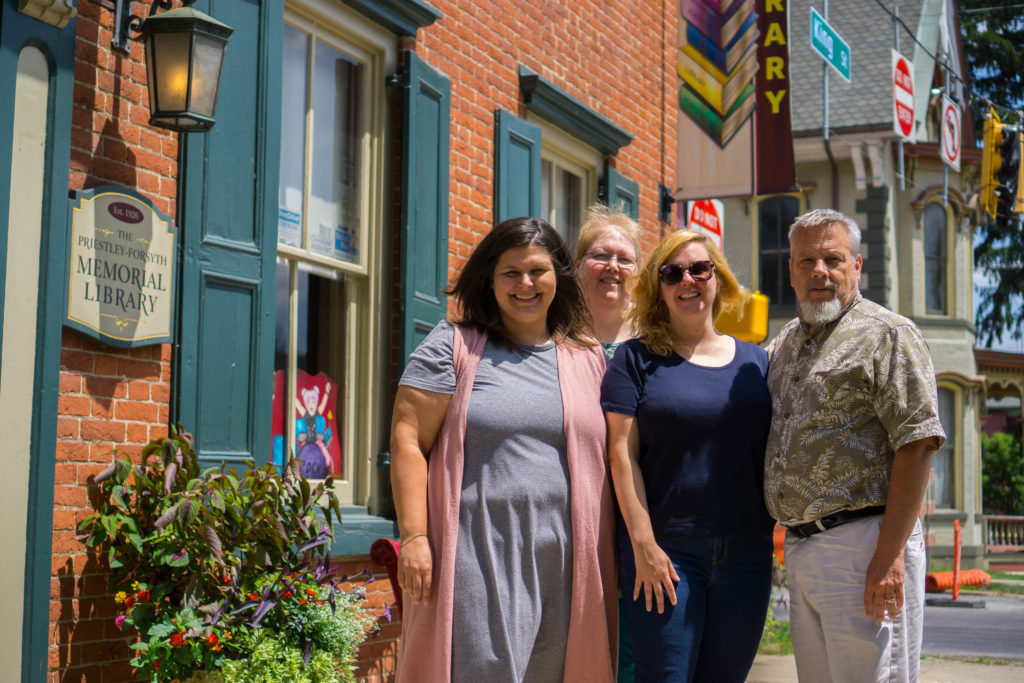
Someone who has put in many miles traveling to libraries is our Senior Program Officer, Jen Danifo. She works closely with libraries to implement Teen Reading Lounge and provides training and technical support.
Her work at PHC is rooted in the belief that the humanities can be powerful force for positive youth development and community change — and that libraries are the perfect place to put the humanities into action.
In celebration of National Library Week, we sat down with Jen to get her thoughts about Pennsylvania libraries, how they’re adapting to change, how they’re engaging with youth, and their important contributions to youth development.
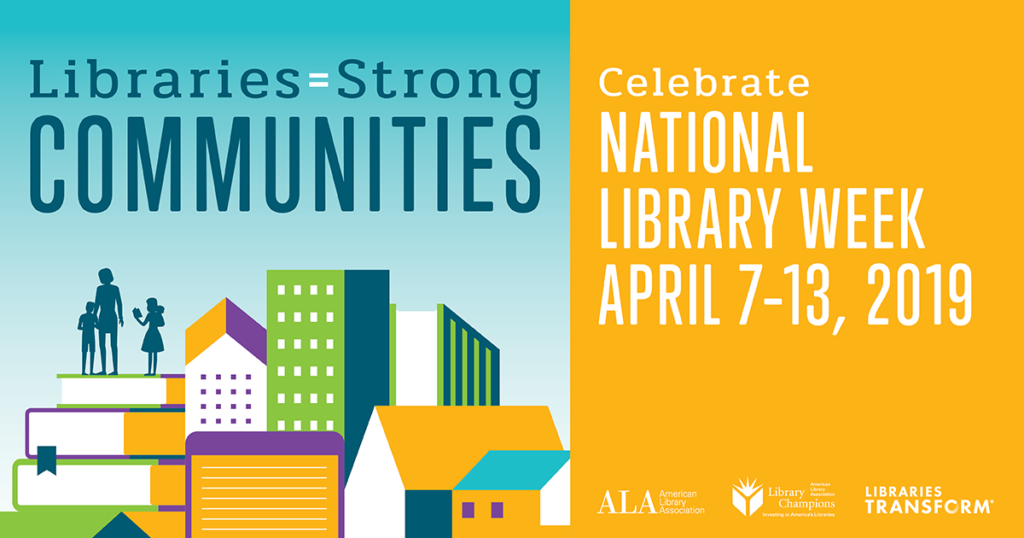
What do you love about Pennsylvania’s libraries?
I’ve visited many PA libraries in my time here at PHC, and hands down it’s the people I love the most. The staff of our PA libraries are so dedicated, creative, and caring. I’m always amazed at how much they can accomplish and how much they love the communities they work in.
I also love how libraries are committed to making organizational adjustments in response to the way our world is changing. Libraries aren’t just about books and circulation anymore. The work we’ve done with libraries on our Teen Reading Lounge program has helped bring a lot of these changes to the surface.
Libraries are thinking through things like how to engage with diversifying communities and how to be more inclusive and equitable. It’s not easy work, but necessary if they are to continue to thrive.

Can you give some examples of how PHC works with libraries to become more aware of community changes?
The recognition that our communities are changing and that libraries have to adjust to be better community partners is vital. You can’t just jump to programming first. PHC really believes that organizations have to make a considerable effort to understand who lives and works in their communities. We work with libraries that are committed to this as well.
For example, one of the first steps we take with our Teen Reading Lounge grantees is to ask them to create a community network map. We ask them to look at the demographics of their community and service area.
They think about the different kinds of young people in their community and where they gather (or don’t gather). They consider community partners and individuals who can help them reach or build relationships with youth. They think about income and family structures and other context that helps them understand a young person’s experience.
This ensures they are being guided by the context and need, that they have a larger purpose and are more intentional with programs. This first step also helps libraries build their knowledge about the community and how it could be changing.
How will they adjust? What partnerships might they have to build to reach different kinds of youth? They also do quite a bit of self-reflection and explore how they and their organization can be a champion of missing and hidden voices that may be present in the community but aren’t being engaged.
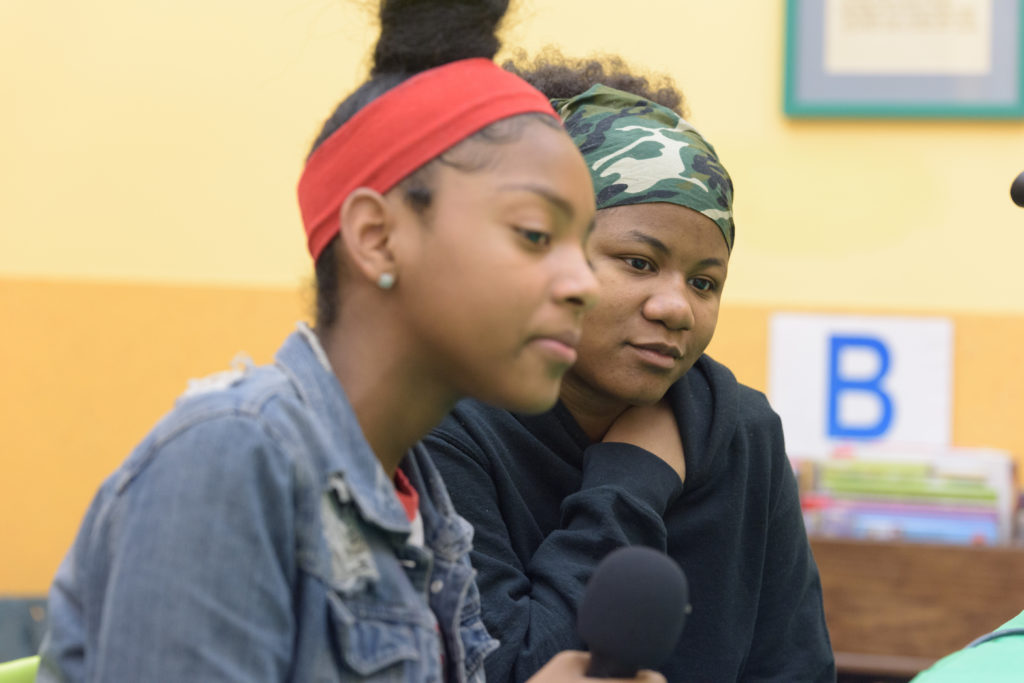
As many libraries begin to shift towards more of a community center model, the network mapping exercise either highlights what they already know about the community or fills in gaps about what they don’t.
We’re seeing libraries make this shift and as a result engagement with youth is more meaningful and programs are more intentional and relevant.
How can libraries better engage with youth?
In our experience with TRL, we’ve seen that first and foremost youth want a safe and welcoming place to gather and trusted adults who will meet them where they are. In many communities, they can be locked out of public spaces because of biases and preconceived notions about who they are and how they’ll behave. Imagine what kind of an effect that has on a young person’s confidence and personal development.
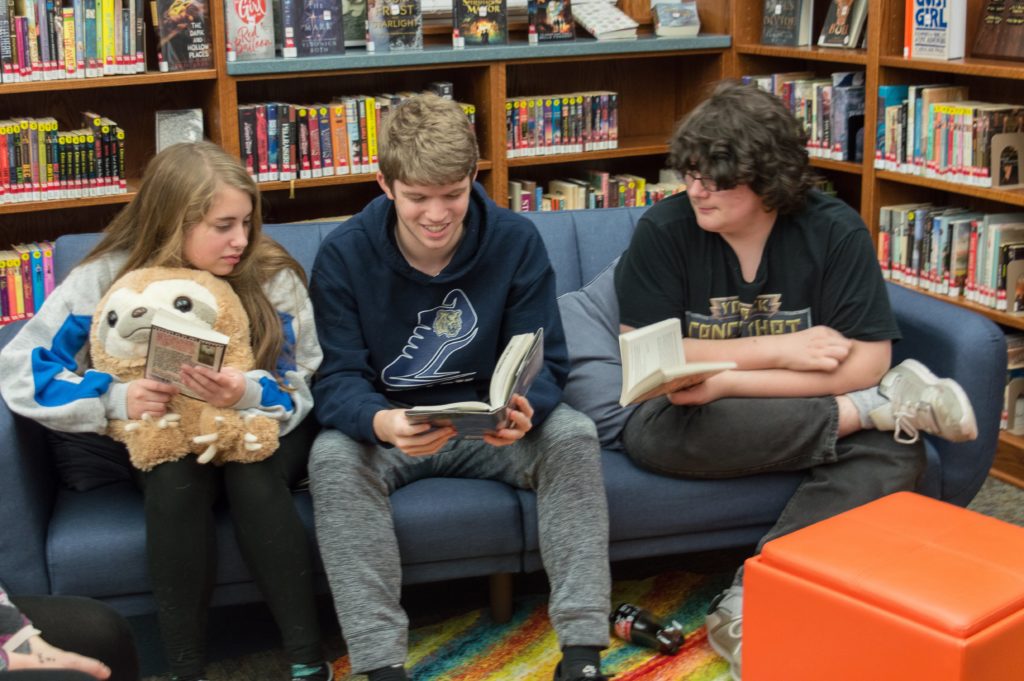

Youth want what everyone wants: they want to tell their story, they want to be heard and they want to feel supported as they try to process what’s happening in their lives. Think of a time when you felt valued, respected, and supported. What contributed to that experience? Replicate that for your young people and I promise you, it’ll make a difference.
Many libraries are learning that the more they create space for youth to take the lead and drive activities, the better the experience is for everyone. The old model of adults taking the lead and telling youth what to do needs to be replaced with something more youth-driven. We’ve learned that working in collaboration with youth yields better relationships and they’ll stay engaged if they feel like they are appreciated.
What role should young people play in a library?
Youth should play all the roles! Seriously, what can’t they do?
We’ve seen them plan programs, do outreach, promote, and run programs. I honestly think there is no limit to the roles youth can play in the library. I’d like to see more young people on library boards, though. I’d like to see them have more of a chance to build leadership skills, learn how an organization runs and have influence on policy and procedures.
If they are the future of our communities, why can’t we start now?
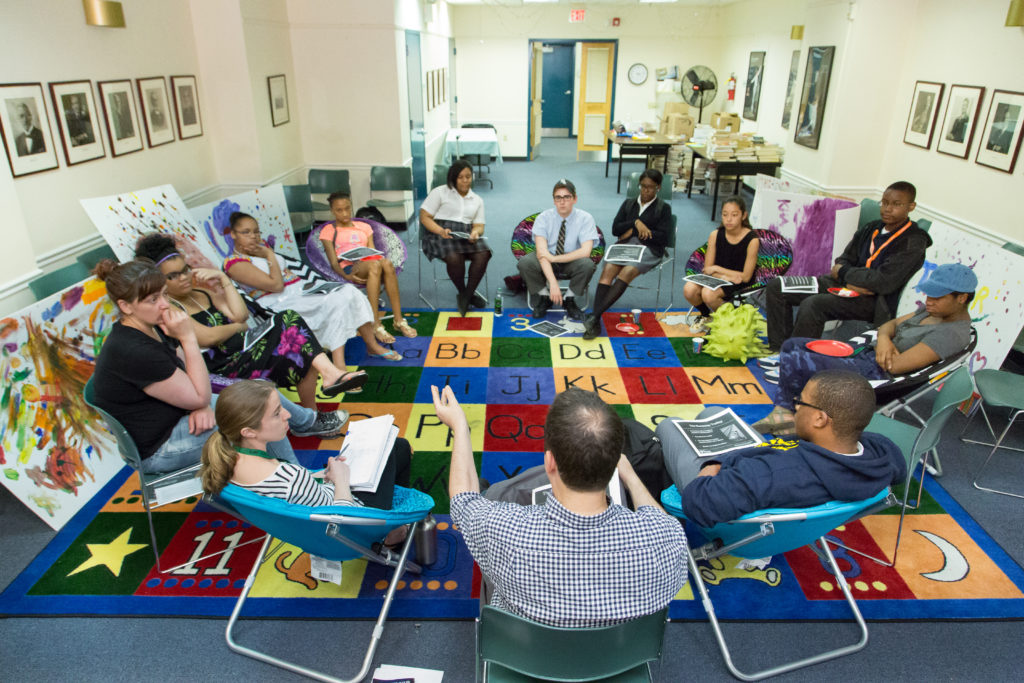
Why are the humanities — and libraries — so important to positive youth development?
For some reason we’ve convinced ourselves that personal growth and development is only for the elite, that it can only happen in certain spaces, and that it needs to look a certain way for it to be valid or of good quality.
I push back on all of those things, and challenge us to make the humanities a part of every young person’s developmental and educational experience – and to be open to the ways in which youth will change our perspectives about what the humanities should look like.
This is important to development because this is how we signal to young people that they are cherished and valued. When we start to tell youth their contribution isn’t good enough or try to dictate what they are and aren’t capable of, we’re marginalizing their experiences and lives, which erodes their self-worth.
The earlier this erosion begins, the more damaging it can be.
The beauty of the humanities is that there is room for every story and experience. The humanities help us better understand ourselves and our worlds and there’s no limit to what that can look like. Showing youth that they have a place in the larger story, that they can contribute to their communities, can have a profound impact on their development and self-worth.
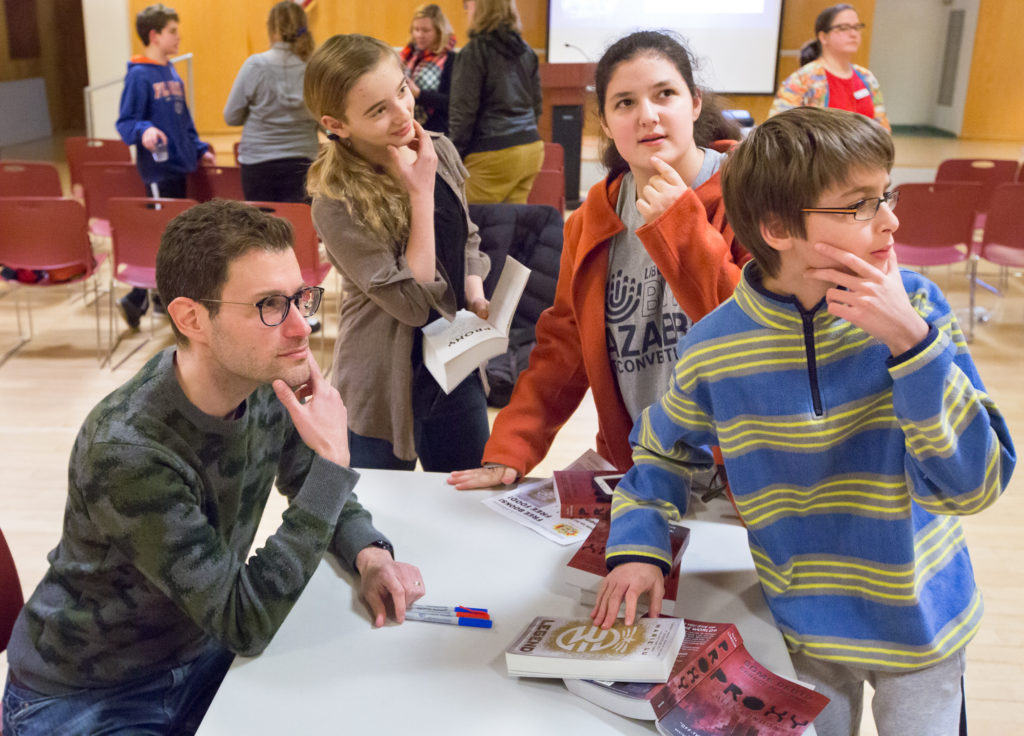
Libraries are a catalyst for this work. They don’t have to follow the “rules” of some of our more traditional learning partners and that can be very freeing for both the staff and the young people.
All of this work is about making our communities stronger by enhancing the assets of the individual. In my opinion that’s one of the most beneficial things a library does; libraries are actively supporting learning, self-reflection, and critical-thinking — and preparing youth to positively contribute to community life.
If that isn’t a reason to love libraries, what is?
***
Teen Reading Lounge is made possible by a grant from the Institute of Museum and Library Services as administered by the Pennsylvania Department of Education through the Office of Commonwealth Libraries, and the Commonwealth of Pennsylvania, Tom Wolf, Governor. Additional support is provided by the National Endowment for the Humanities, generous individuals, foundations, and corporations.

![[color – dark bg] PA SHARP FINAL FILES DB 72dpi [color - dark bg] PA SHARP FINAL FILES DB 72dpi](https://pahumanities.org/uploads/files/elementor/thumbs/color-dark-bg-PA-SHARP-FINAL-FILES-DB-72dpi-phgl7aimtfdpzt2rscvl43ksfv3asbbls19lsvuacw.jpg)
